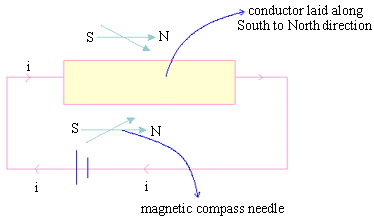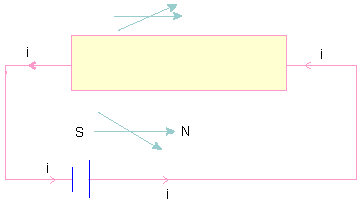|
CHAPTER 22 : MAGNETIC EFFECT OF ELECTRIC CURRENT 22.1 Oersted's Experiments Electric and Magnetic phenomena were considered to be unrelated and independent facts of life until Oersted in early 19th century discovered that they are interrelated. He discovered that electric currents produce magnetic fields in the space surrounding the conductors through which they flow. The presence of a magnetic field was detected because of the deflections in the magnetic compass needle placed close to the conductor.
The effects of a magnetic field produced by current in the conductor on the magnetic compass needle are represented in Figure1 and Figure 2. Ampere's Rule can be formulated, depending on the position of the bar magnet (below or above the conductor) and the direction of deflection (towards or away from the conductor). This law determines the nature of the lines of force of the magnetic field. |
22.1 Oersted's Experiments Follow @Pinkmonkey_com  |


